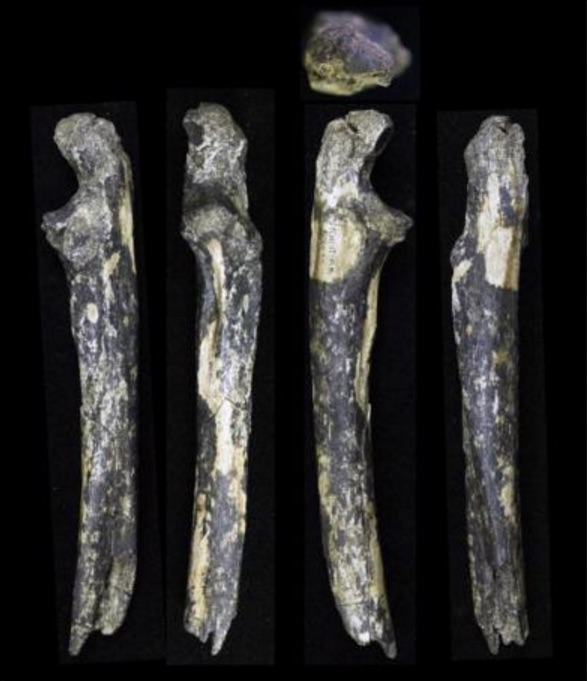'Cousin of Lucy' Fossils Reveal Human Relative Lived in East Africa

Fossils belonging to an ancient human relative that were discovered on the banks of a Kenyan river suggest that hominids lived farther east than previously thought.
Researchers found the fossils — a forearm bone and teeth belonging to an adult Australopithecus afarensis male and two infants — along the Kantis River in Ongata-Rongai, a settlement just outside the capital city of Nairobi.
The fossil find represents the first Australopithecus member found east of the Rift Valley, a ridge that runs north to south through Kenya and other east African countries, the researchers said. Remains of Australopithecus bahrelghazali, another human relative in the same genus, were found in Chad (west of the Rift Valley), suggesting that members of this genus lived in central Africa. [Image Gallery: Our Closest Human Ancestor]
"So far, all other A. afarensis fossils had been identified from the center of the Rift Valley," study senior author Masato Nakatsukasa, a biological anthropologist at Kyoto University in Japan, said in a statement."[The new finding] has important implications for what we understand about our ancestors' distribution range, namely that Australopithecus could have covered a much greater area by this age."
A. afarensis is thought to have lived between 3.7 million and 3 million years ago. The species includes the famous 3.2-million-year-old Lucy, whom researchers uncovered in Ethiopia in 1974. Other A. afarensis specimens have been found in Tanzania, the researchers noted.
The scientists did an isotopic analysis of the site where the fossils were found. By studying the isotopes (variants of an element with differing numbers of neutrons) at the site, researchers can determine the region's ancient environment and climate. The analysis revealed that the area, known as Kantis, had a humid and plainlike environment. It also had fewer trees than other areas in which Australopithecus has been found, the researchers said.
"The hominid must have discovered suitable habitats in the Kenyan highlands," said Nakatsukasa, who worked on the study with researchers from Japan and Mount Kenya University. "It seems that A. afarensis was good at adapting to varying environments."
Sign up for the Live Science daily newsletter now
Get the world’s most fascinating discoveries delivered straight to your inbox.
An excavation at Kantis also uncovered hundreds of mammal fossils, including what is likely a new species of bovid (hoofed animal) and a baboon, the researchers said.
The team thanked the local residents for helping to uncover the fossils. In 1991, researchers came to Kantis after a farmer reported that he had found fossilized bones in the area. The farmer said he first noticed the bones in the 1970s but hadn't realized their importance until shows on paleontological research began airing on TV.
The finding will not only further anthropological research, but also could bring more business to the area.
"Kantis is in the vicinity of Nairobi, a major city," Nakatsukasa said. "We hope that the discovery of the new site and the fossils will aid in increasing tourism, and in improving educational awareness of the local community."
The study will appear in the May 2016 issue of the Journal of Human Evolution.
Follow Laura Geggel on Twitter @LauraGeggel. Follow Live Science @livescience, Facebook & Google+. Original article on Live Science.

Laura is the archaeology and Life's Little Mysteries editor at Live Science. She also reports on general science, including paleontology. Her work has appeared in The New York Times, Scholastic, Popular Science and Spectrum, a site on autism research. She has won multiple awards from the Society of Professional Journalists and the Washington Newspaper Publishers Association for her reporting at a weekly newspaper near Seattle. Laura holds a bachelor's degree in English literature and psychology from Washington University in St. Louis and a master's degree in science writing from NYU.










